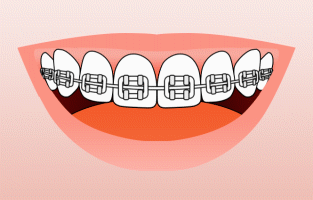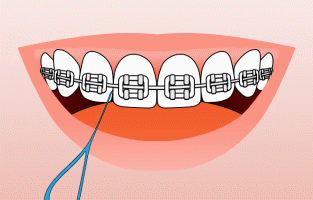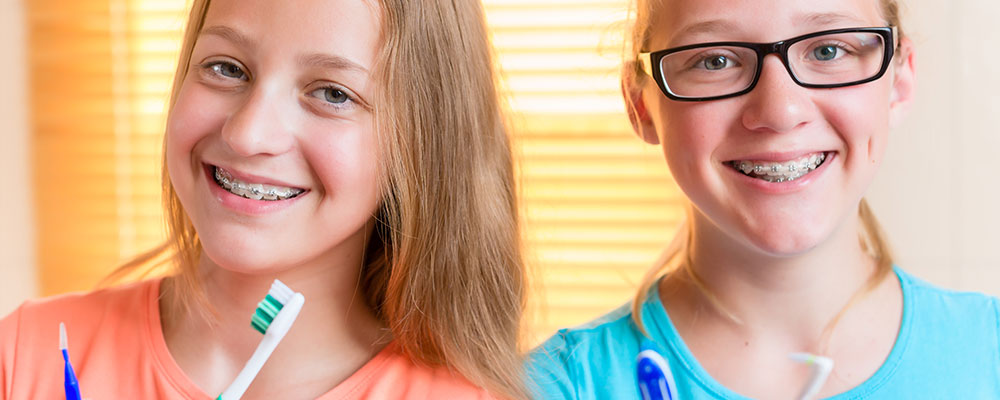Brushing and Flossing
When you have braces, it's very important to brush and floss after every meal in order to keep your teeth and gums healthy throughout your orthodontic treatment. In addition to good oral hygiene, an orthodontic patient's diet is also important in achieving a healthy smile. We encourage our patients to avoid food and drinks that are high in sugar. This includes soft drinks and energy drinks.
Brushing with Braces
Brush your teeth for two minutes after every meal with a soft-bristled, small-headed toothbrush and fluoride toothpaste. As an alternative, you can use a powered toothbrush to increase your brushing effectiveness. Brush the outside and inside surfaces of your teeth using small, gentle, circular motions while positioning the head of the toothbrush at a 45-degree angle to the gum line. Brush your teeth’s chewing surfaces and the inside surface of your front teeth using short, gentle, back-and-forth motions. Pay close attention to the areas around your brackets or other appliances.

Flossing with Braces
Flossing at least once a day will help keep your teeth and braces clean, which will also help keep your treatment time on track. To floss with braces, use a floss threader or special orthodontic floss to thread the floss behind each wire. Wrap the ends of the floss around your pointer fingers of both hands, leaving a few inches of taut floss between them. Gently slide the floss between each set of teeth using a back and forth motion. Floss the sides of each tooth beneath the gum line to remove plaque and food particles. Repeat this process until you’ve flossed all of your teeth. If you find that your floss is not removing all of the food particles between your teeth and around your braces, ask us about a water flosser!









 Website Powered by Sesame 24-7™
Website Powered by Sesame 24-7™